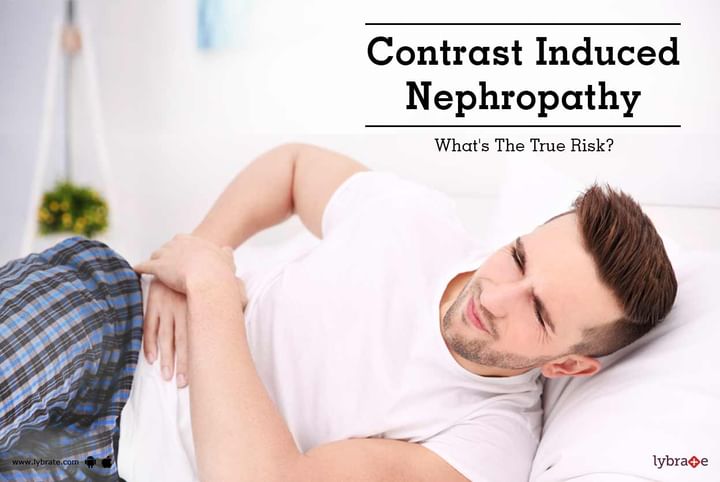Contrast Induced Nephropathy - What's The True Risk?
Contrast-induced nephropathy (CIN) is a serious complication that may arise during angiographic procedures and is elaborated as the impairment of renal function. It is estimated as either a 25% increase in the serum creatinine (SCr) from baseline or a 0.5 mg/dL (44 µmol/L) increase in absolute creatinine value within two to three days after intravenous contrast administration of intravascular radiographic contrast material that is not attributable to other causes.
To simplify, contrast-induced nephropathy (CIN) is a form of kidney damage in which there has been recent exposure to medical imaging contrast material without another apparent cause for the acute kidney injury. CIN is considered the 3rd most common cause of hospital-acquired renal dysfunction. There are emerging concerns that the importance of CIN has been greatly overstated. Here discussed are the risk factors with concerns comprised in (CIN) Contrast induced nephropathy.
Complications in consideration of Contrast induced nephropathy
One of the leading causes of hospital-acquired acute kidney injury (AKI), CIN is associated with longer hospital stay and while the incidence is low (0-5%) in patients with normal renal function, trials report that it is as high as 26% in patients with impaired renal function. Also, studies report that about 15% of the affected patients needed dialysis.
There is a complex association between CIN, mortality, and comorbidity. Majority patients who receive CIN do not die from renal failure. Death, if a patient at all dies, is more usually from a procedural complication or a pre-existing non-renal complication.
Risk concerns
Many physicians who refer patients for contrast procedures and some who perform the procedure themselves are not entirely informed about the risk of CIN. Individuals with diabetes mellitus, chronic kidney disease, hypotension, reduced intravascular volume, or who are over 75 years of age are at increased danger of evolving CIN after exposure to iodinated contrast. A survey found that most of referring physicians were not aware of potential risk factors, including ischemic heart disease and diabetes mellitus. However, acute kidney injury (AKI) can happen from a variety of causes, or their succession, during severe illness and no trial which is randomized has established the risk of contrast induced nephropathy.
The overblown risk factor
When there is a need to diagnose a suspected arterial thrombus, pulmonary embolism, or intra-abdominal catastrophes, treatments and tests require intravenous contrast and these are often suspended in patients with raised creatinine levels. The diagnostic rift leaves their physicians with less than the best knowledge to make decisions regarding the treatment.
A notable percentage of hospitalized patients experience AKI and an even greater percentage gain IV contrast during their stay in the hospital. There will thus forever be the explanation for observed anecdotal instances of "contrast-induced nephropathy." Whether or not contrast-induced acute kidney injury persists, or has been exterminated by the use of lower-osmolarity contrast agents, would require a comprehensive randomized analysis to sort out.
In most cases, the condition is self-limiting with the creatinine levels peaking for 2-3 days and returning back to baseline within 7-10 days, there are indeed concerns due to the limitation in treatment options.
In case you have a concern or query you can always consult an expert & get answers to your questions!



+1.svg)
